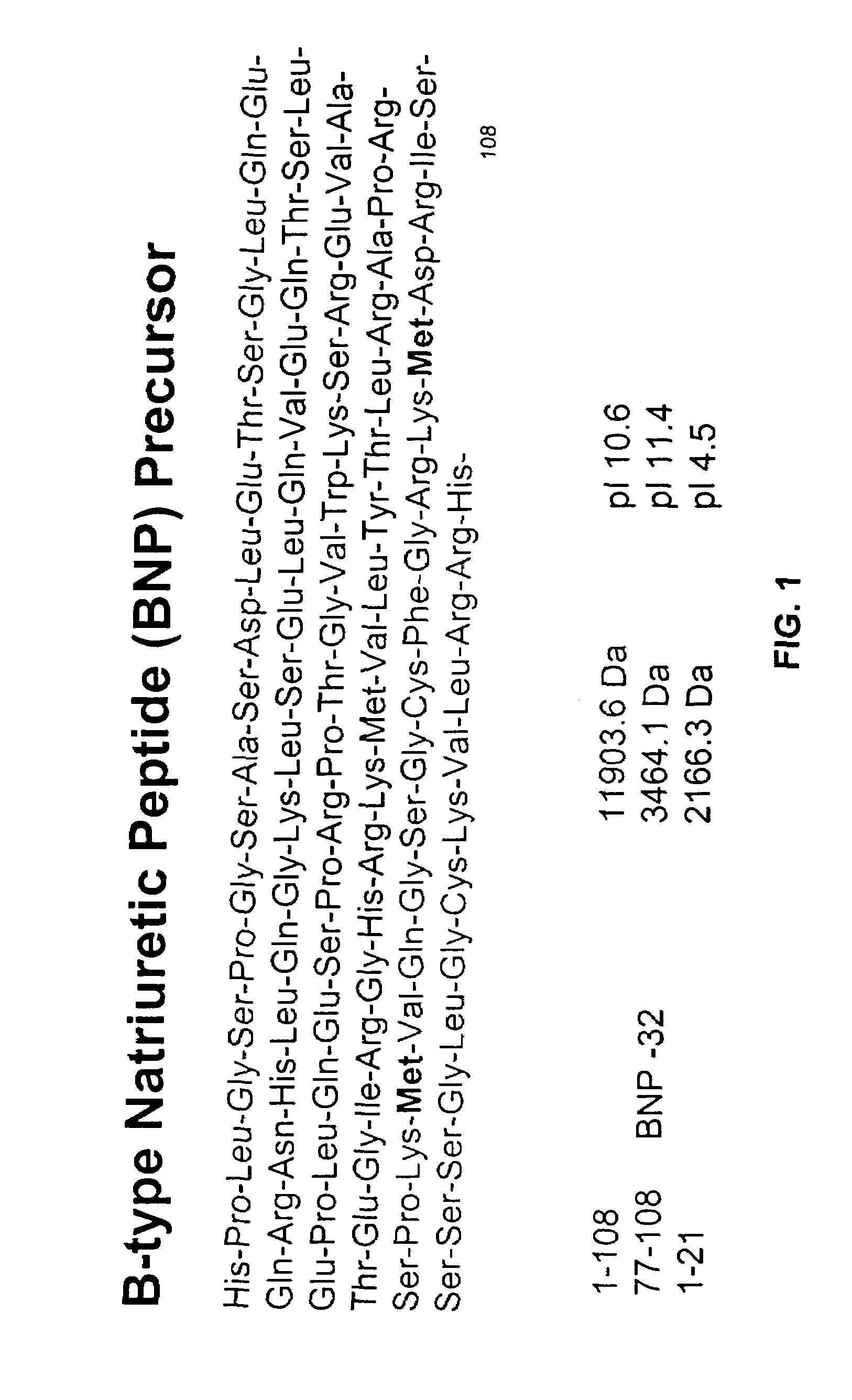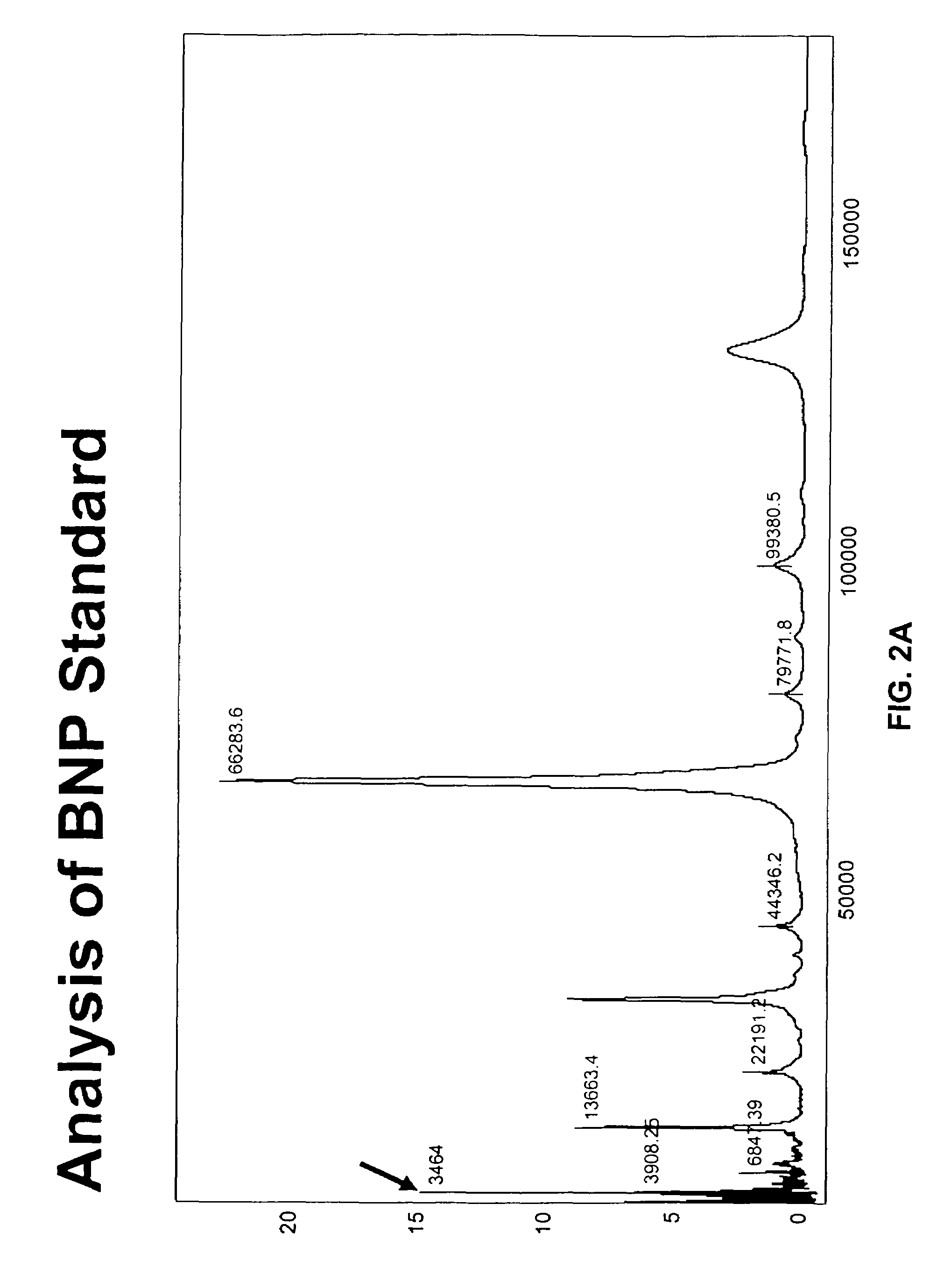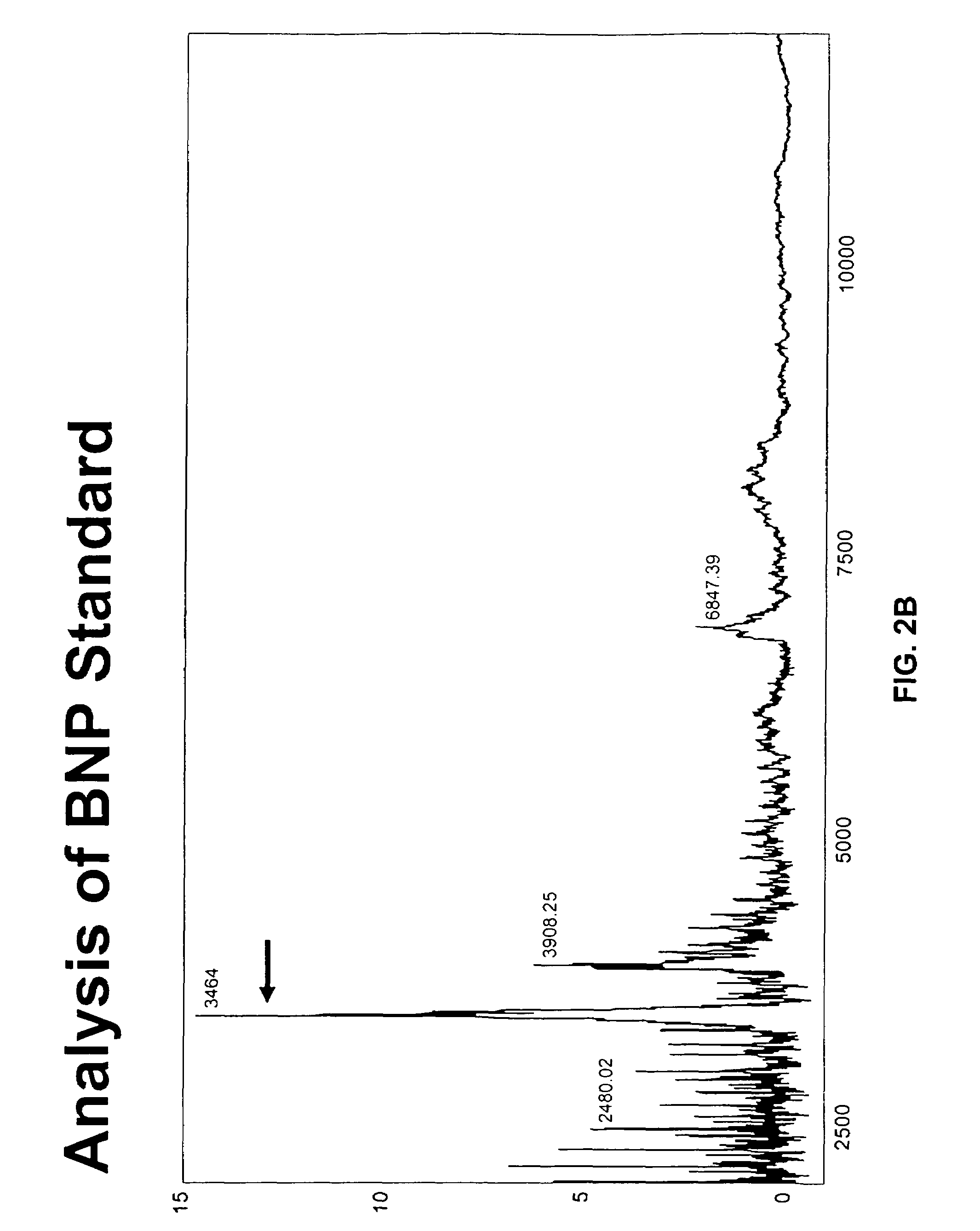Polypeptides related to natriuretic peptides and methods of their identification and use
a technology of natriuretic peptides and polypeptides, which is applied in the field of identification and use of polypeptides, can solve problems such as the stability of natriuretic peptides, and achieve the effect of preventing degradation
- Summary
- Abstract
- Description
- Claims
- Application Information
AI Technical Summary
Benefits of technology
Problems solved by technology
Method used
Image
Examples
example 1
[0232]Blood is preferably collected by venous puncture using a 20 gauge multi-sample needle and evacuated tubes, although fingertip puncture, plantar surface puncture, earlobe puncture, etc., may suffice for small volumes. For whole blood collection, blood specimens are collected by trained study personnel in EDTA-containing blood collection tubes. For serum collection, blood specimens are collected by trained study personnel in thrombin-containing blood collection tubes. Blood is allowed to clot for 5-10 minutes, and serum is separated from insoluble material by centrifugation. For plasma collection, blood specimens are collected by trained study personnel in citrate-containing blood collection tubes and centrifuged for ≧12 minutes. Samples may be kept at 4° C. until use, or frozen at −20° C. or colder for longer term storage. Whole blood is preferably not frozen.
example 2
Biochemical Analyses
[0233]BNP is measured using standard immunoassay techniques. These techniques involve the use of antibodies to specifically bind the protein targets. An antibody directed against BNP is biotinylated using N-hydroxysuccinimide biotin (NHS-biotin) at a ratio of about 5 NHS-biotin moieties per antibody. The biotinylated antibody is then added to wells of a standard avidin 384 well microtiter plate, and biotinylated antibody not bound to the plate is removed. This formed an anti-BNP solid phase in the microtiter plate. Another anti-BNP antibody is conjugated to alkaline phosphatase using standard techniques, using SMCC and SPDP (Pierce, Rockford, Ill.). The immunoassays are performed on a TECAN Genesis RSP 200 / 8 Workstation. Test samples (10 μL) are pipeted into the microtiter plate wells, and incubated for 60 min. The sample is then removed and the wells washed with a wash buffer, consisting of 20 mM borate (pH 7.42) containing 150 mM NaCl, 0.1% sodium azide, and 0....
example 3
Identification of BNP Peptides in Spiked Test Samples
[0234]Purified BNP (either BNP1-108 or BNP77-108) is added to human blood, serum and plasma test samples, and allowed to incubate for from 5 minutes to 24 hours minutes at 22° C. Following this incubation, the samples are subjected to the following analysis to identify BNP-derived peptides present in the samples.
[0235]Test samples were analyzed using a chip-based platform (Ciphergen Biosystems ProteinChip®) coated with anti-BNP antibodies (mouse monoclonal or recombinant human antibodies). For preparing the surface, Protein A or Protein G from Staphylococcus species or Protein D from Haemophilus species is immobilized to an epoxide on a PS2 ProteinChip® surface by incubation for 2 hours in a humid chamber at room temperature. Residual epoxide sites are blocked with 0.5M ethanolamine in phosphate buffered saline (PBS), pH 8.0 for 15 minutes, then the ProteinChip® is washed 1× with 0.5% Triton X-100 in PBS and 3× in PBS for 15 minut...
PUM
| Property | Measurement | Unit |
|---|---|---|
| pH | aaaaa | aaaaa |
| pH | aaaaa | aaaaa |
| pH | aaaaa | aaaaa |
Abstract
Description
Claims
Application Information
 Login to View More
Login to View More - R&D
- Intellectual Property
- Life Sciences
- Materials
- Tech Scout
- Unparalleled Data Quality
- Higher Quality Content
- 60% Fewer Hallucinations
Browse by: Latest US Patents, China's latest patents, Technical Efficacy Thesaurus, Application Domain, Technology Topic, Popular Technical Reports.
© 2025 PatSnap. All rights reserved.Legal|Privacy policy|Modern Slavery Act Transparency Statement|Sitemap|About US| Contact US: help@patsnap.com



